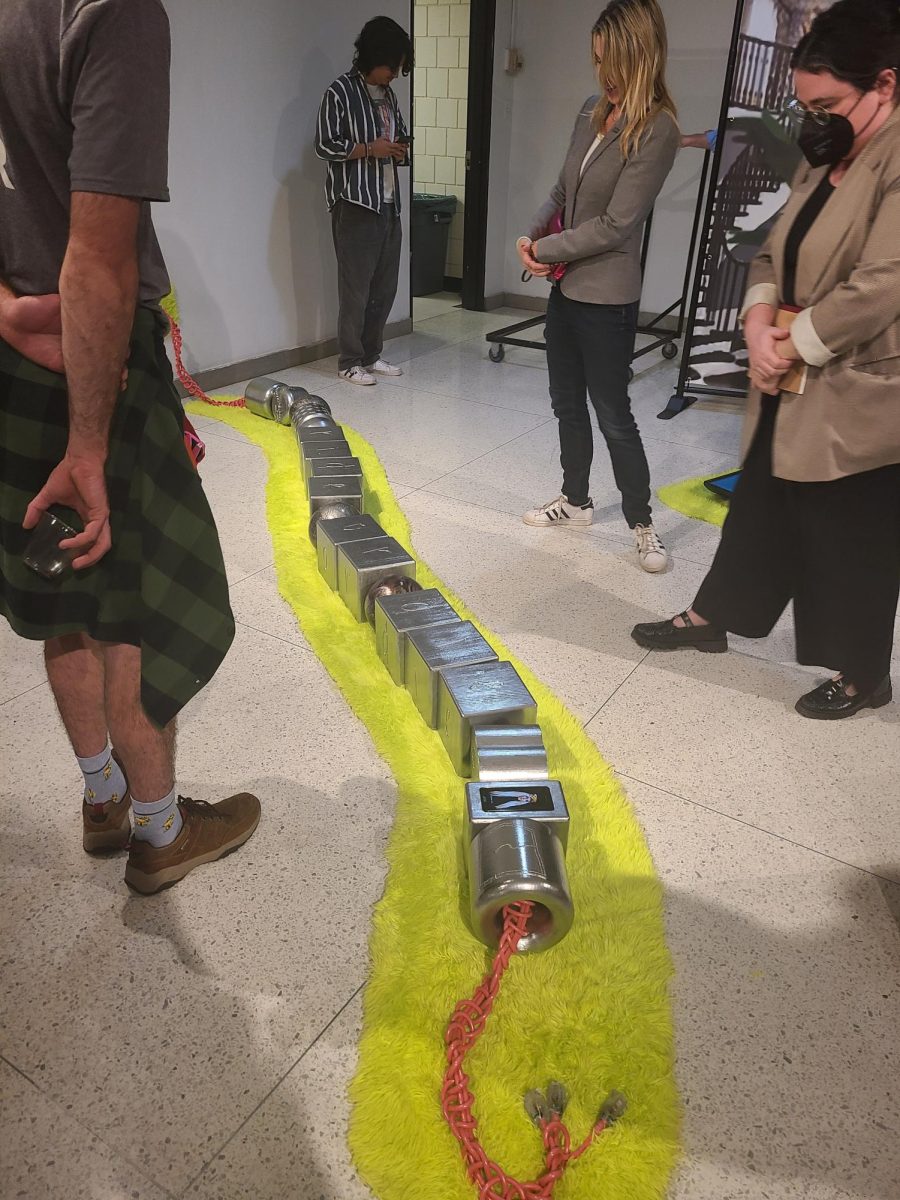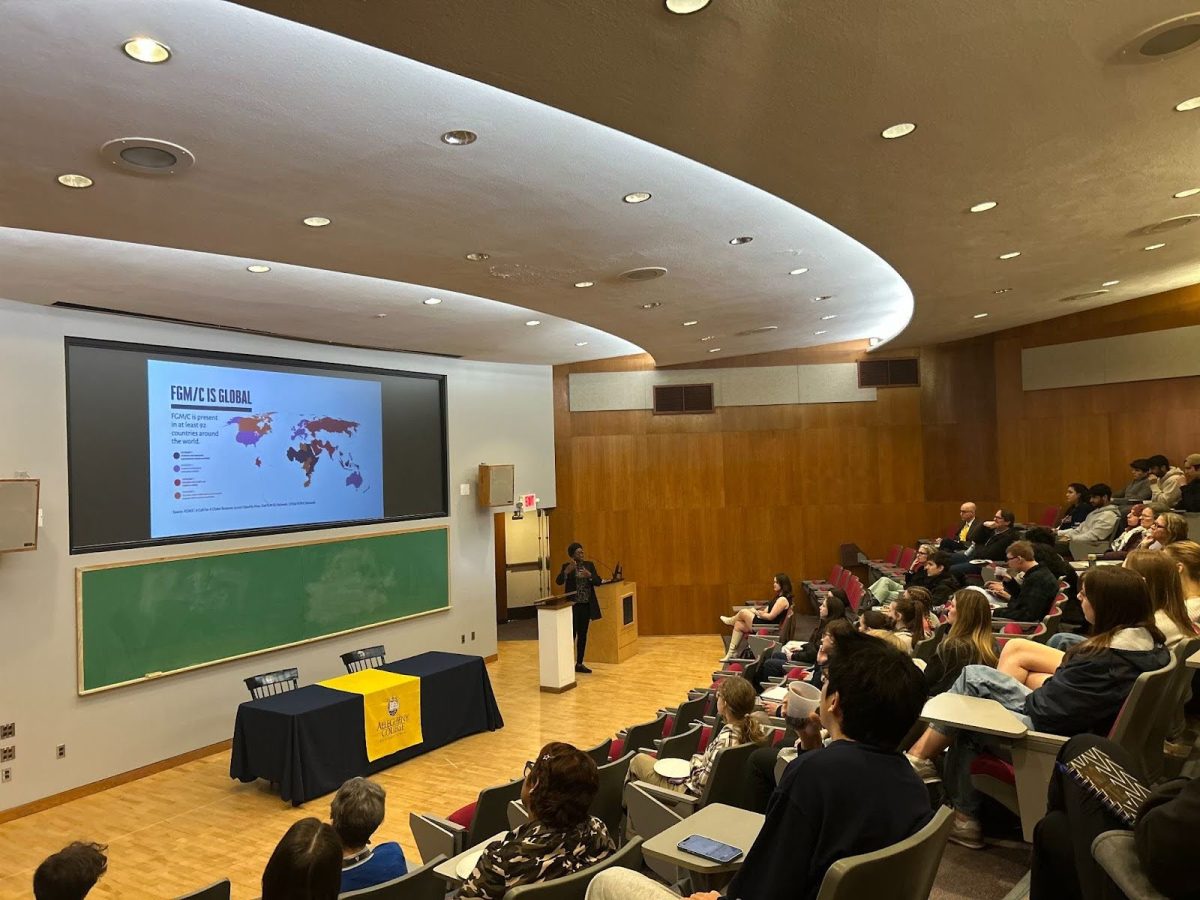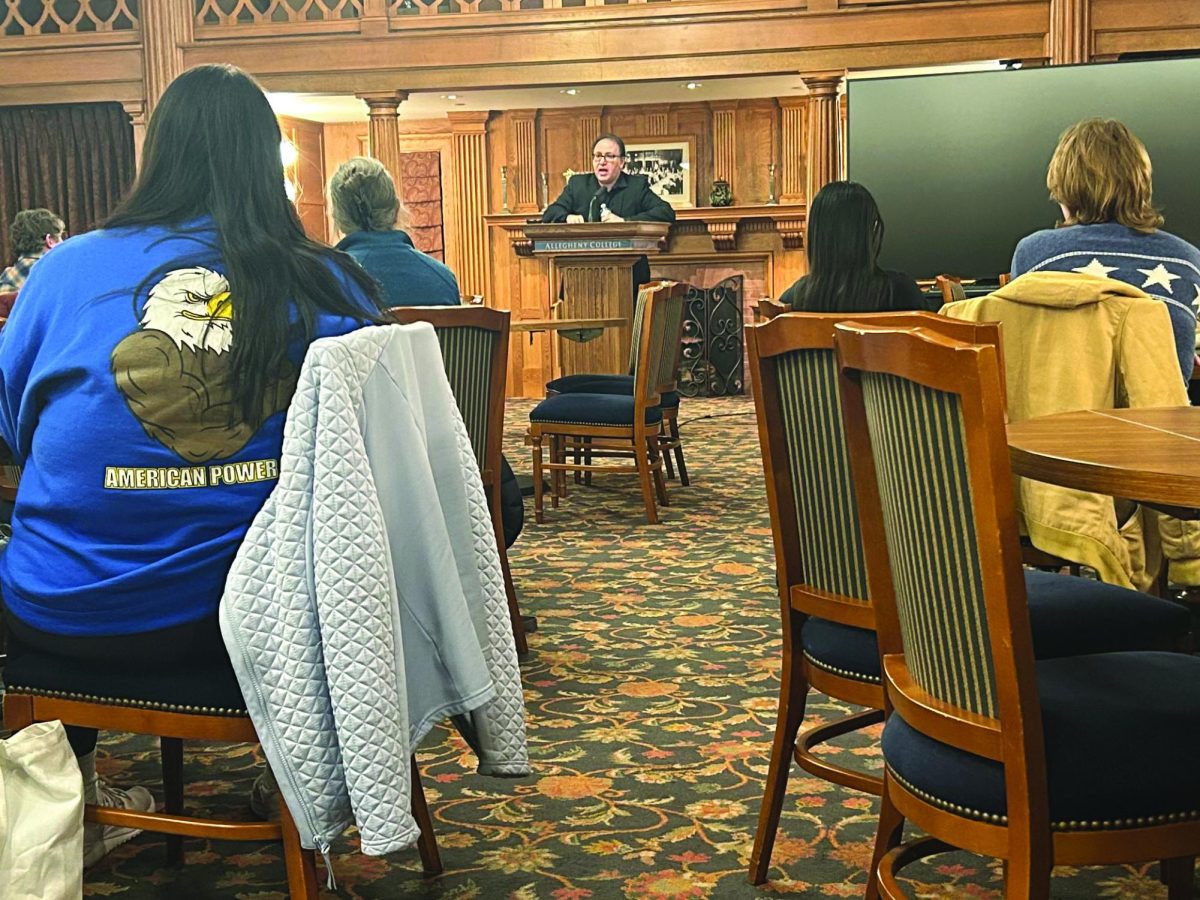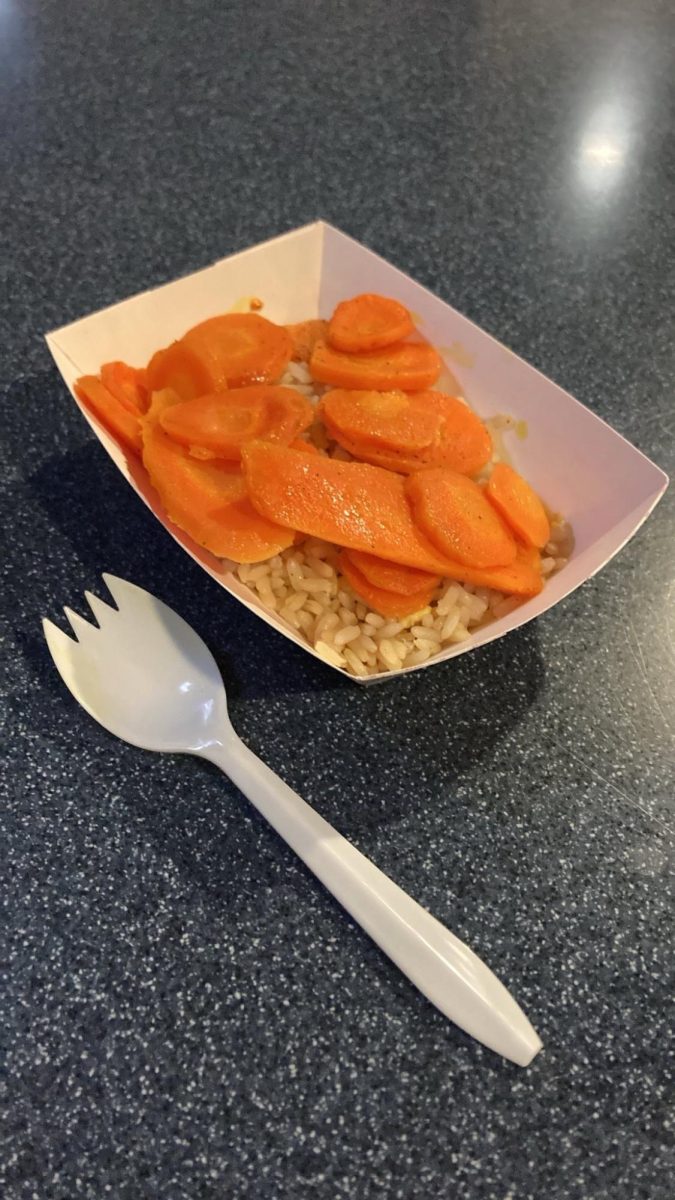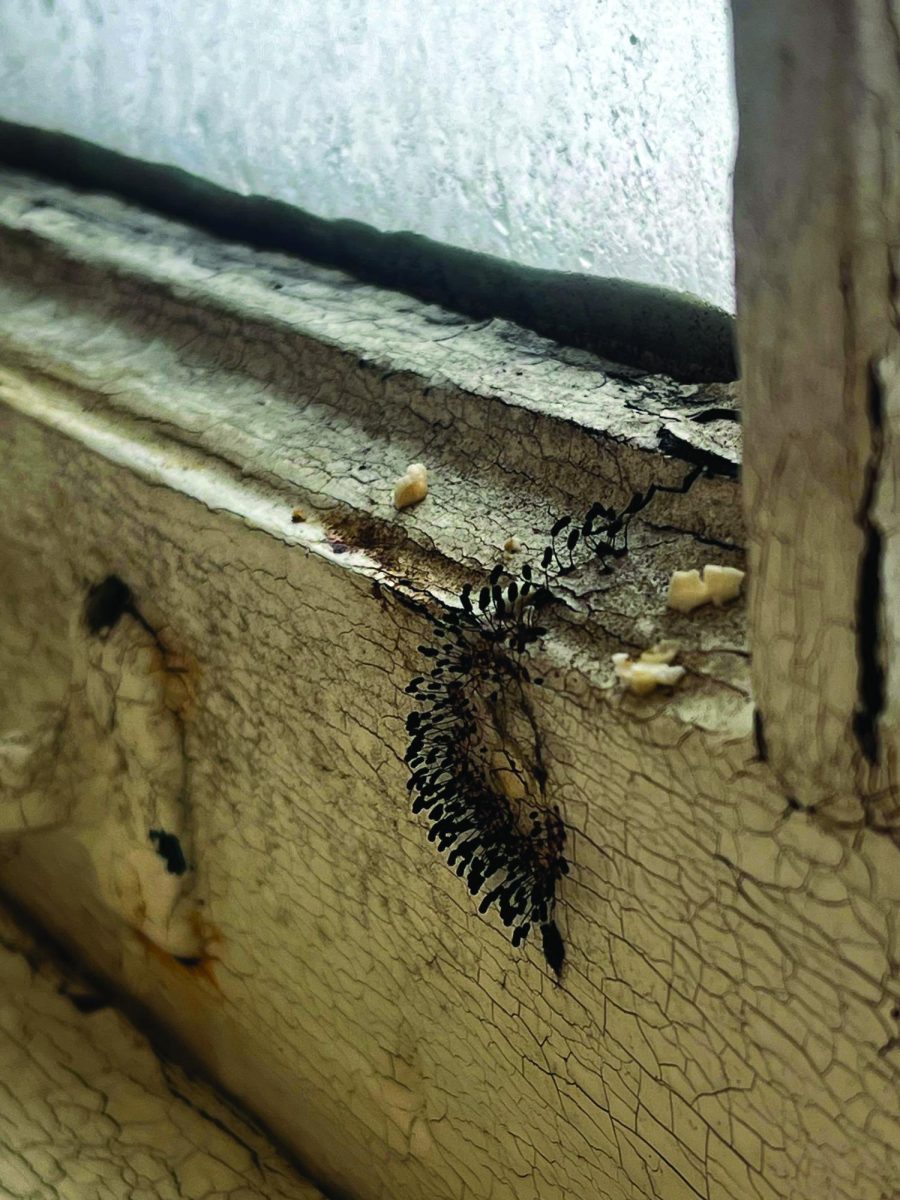Throughout the year, Allegheny College students have the opportunity to experience several exhibitions and panels that highlight the creativity of various artists and mediums.
On Tuesday, Sept. 19, from 5:30 p.m. to 6:30 p.m. at the Allegheny Art Galleries, an exhibition titled “Flesh Machines” featured three artists who exhibited their work to have a conversation about how language and gender operate in a digital era.
The exhibition was curated by Assistant Professor of Art Paula Burleigh and Interim Director of Allegheny Art Galleries Jack Honeysett.
Assistant Professor of Digital Media and Ethnography Melody Devries spoke about her experience as moderator for the panel. Devries was asked to moderate because their work delves into feminist ideas about how people relate to the world which overlaps with the themes the curators wanted to bring into the exhibition.
“I’m pretty familiar with these types of ideas so I was decently confident that I could draw from those things in the discussion,” Devries said. “At the same time, I wanted to hear from the artists about how they are interpreting their work so we met beforehand and I went to see the different pieces and see what types of concepts came out of them.”
In the discussion, the concept of allowing art to fester was heavily discussed. Festering is the process of allowing art to have agency of its own.
“Let it sit there and look at what is popping out to us instead of us trying to dominantly correct its path all the time,” Devries said. “Without the festering, I suppose we are kind of stifling an important part of the process that makes us question our expectations and assumptions of what the piece is gonna look like.”
The panel began with artists presenting their work and explaining their thought processes when they were in the creation stage.
Assistant Professor of Computer and Information Science Morgan Green was one of the panelists who explored art and language through algorithm-driven systems. One of her pieces was a live-generating poetry machine that used Emily Dickinson’s corpus as its training data.
“The reason why I work with language in this way is because I think language is the place where history enters the body,” Green said. “I am also thinking about the politics of language and the way that certain kinds of violence are carried through using language.”
Panelist Rebecca Forstater also uses history as inspiration to create art pieces, specifically, current history in digital landscapes through the lens of popular culture. One of their pieces is a sculpture of an enlarged Tomogotchi sitting on top of a perler bead butterfly with a screen that tells a story of an Internet hoax through the lens of a teenager’s diary entries in 2001.
“When I was making this piece, I was thinking a lot about the 20-year wave of nostalgia that hits every young generation where they look backward culturally with fondness, longingness and better times they perceived,” Forstater. “It was not because that’s how the world was, but because of how it’s retold.”
The concept of festering was introduced by the last panelist, Danni O’Brien, who uses festering as a technique in their physical work. O’Brien’s work is grounded on environmentalism, nostalgia, and owned queerness, according to the Flesh Machines exhibition website. Through her work, she has been awarded several residencies like Art Farm, Baltimore Clayworks and Proyecto Ace.
“I am interested in how materials can rely on each other, sort of forming crutches and it is an analogy for queer ecosystems, queer communities specifically,” O’Brien said. “The next step is festering and in this stage, I am interested in taking a step back from the work and spending this longer time communing with it, looking at it, listening to it, and seeing how it changes over time.”
O’Brien revealed that their way of “queering” her work is by having an intentional resistance and misuse of materials.
“A lot of times, the work I am making comes from or starts with a formally functional object or apparatus and I intentionally turn it on its head and try to play with the connotations of something that was once useful but is now totally functionless and this sort of absurdity and queerness that can come from that resistance,” O’Brien said.
After the panel, guests were invited to the reception where they could talk to artists and continue viewing their work while enjoying refreshments and food.
Categories:
New art exhibit ‘Flesh Machines’ opens
“The Things that Last 4Ever” by Rebecca Forstater is one of the artworks showcased at the “Flesh Machines” gallery.
Story continues below advertisement
0
More to Discover
About the Contributor

Evelyn Zavala, Staff Writer
Evelyn Zavala is a senior from San Francisco. She is majoring in Business and minoring in Journalism in the Public Interest. This is her fourth year on staff as a writer. In her free time, she enjoys reading and playing games.




